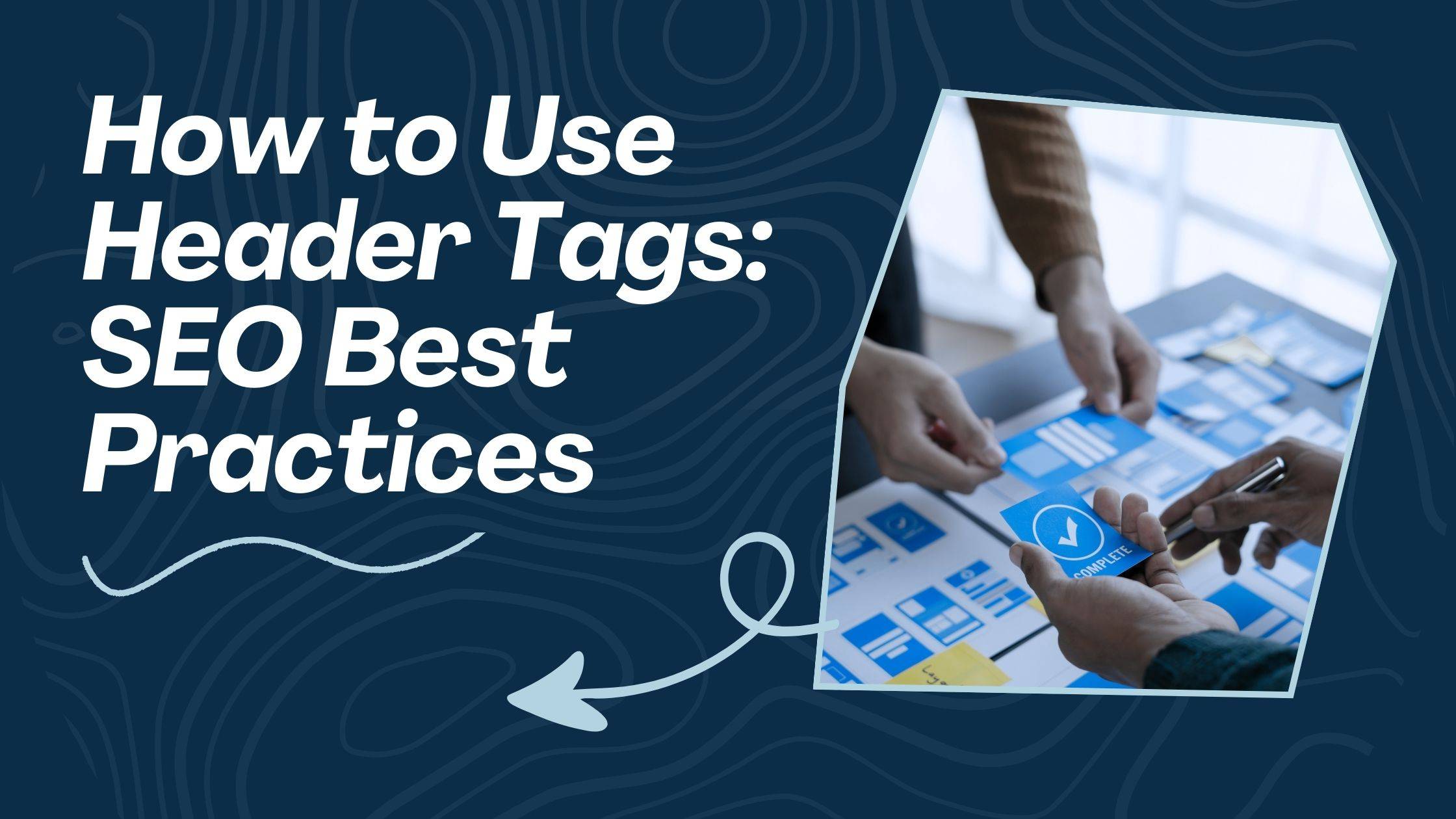Strengthen your SEO by using header tags effectively. Properly optimized headers improve readability, search visibility, and overall user experience.
Header tags play a vital role in both web design and SEO, as they influence navigation, clarity, and rankings.
Although often underestimated, these HTML elements create a clear hierarchy for your content, making it easier for readers to scan and understand.
They also serve as semantic markers, giving search engines valuable context about the main ideas and structure of a page.
Google highlights the importance of header tags, with John Mueller, Search Advocate at Google, noting that header elements act as a “really strong signal” for identifying a page’s core topics.
Since Google prioritizes delivering quality user experiences, optimizing headers is a way to benefit both site visitors and search algorithms.
This guide explains how to make the most of header tags—covering everything from structuring content and improving scannability to targeting featured snippet opportunities. It also shares tips on integrating relevant keywords and keeping formatting consistent.
By applying these practices, websites can enhance usability while increasing their chances of ranking higher in search results (SERPs).
What Is a Header Tag?
Header tags are HTML elements that instruct a browser on how to style and display specific text on a webpage.
For example, the HTML for the heading above would appear as:
<h2>What Is a Header Tag?</h2>
Just like headings in printed material, header tags introduce or label the content that follows. They follow a hierarchy from <h1> through <h6>.
- H1 is reserved for the main heading or page title.
- H2 and H3 are typically used for subheadings.
- H4, H5, and H6 help break down sections even further.
Header tags benefit both readers and search engines. For visitors, they provide a preview of what each section covers. For search engines like Google, they create structure and context—much like chapter titles in a book—allowing quick scanning to understand the page’s subject.
How Many Header Tags Exist?
HTML includes six levels of header tags: <h1> through <h6>.
<h1>is used for the primary title of a page.<h2>and<h3>work well as subheadings.<h4>,<h5>, and<h6>add further organization within subsections.
Next, let’s look at some best practices.
1. Use Header Tags to Build Structure
Header tags give your content a clear framework, making it easier for both readers and search engines to follow along.
Think of your H1 as the main title, H2s as major sections or chapters, and H3–H6 as supporting subsections within those chapters.
When drafting an article or landing page, outline the key points you want visitors to remember. These main points should guide your choice of header tags, ensuring a logical and well-organized layout.
2. Break Text Into Subheadings
Large blocks of text can overwhelm readers. Breaking them up with descriptive subheadings improves readability and keeps your audience engaged.
This approach not only makes content more user-friendly but also helps search engines better understand the topics you’re covering.
Well-structured, scannable content often performs strongly in search rankings and has a higher chance of being shared on social platforms—boosting your potential for natural backlinks.
3. Add Keywords to Header Tags
Where relevant, include your target keywords in header tags—but use them thoughtfully. Your headers should remain engaging and reflect the section they introduce.
While keywords provide important context for search engines, forcing them can harm readability. Google values headers that naturally describe the content, so prioritize clarity and usefulness.
Avoid keyword stuffing, as it may reduce user experience and even trigger search engine penalties.
4. Optimize for Featured Snippets
Strategic use of header tags can improve your chances of appearing in Google’s featured snippets.
For paragraph snippets:
- Choose a relevant long-tail keyword and place it in an H2.
- Directly below, write a clear, concise answer within
<p>tags.
This format signals to Google that your content neatly answers the query, increasing the likelihood of being pulled into a snippet.
List Featured Snippets
To improve your chances of appearing in list-style featured snippets, structure your content with subheadings (H2 to H6) that outline steps, items, or tips.
Google often compiles these subheadings into bulleted or numbered lists for snippets, which can boost visibility and drive more traffic to your site.
Example:
When searching “how to relieve migraine fast”, Google generates a list of solutions directly from the H2 headings in a WebMD article.
5. Use Only One H1
Although HTML allows more than one H1, it’s best practice to stick to a single H1 per page. This preserves a clear hierarchy and avoids confusion for both readers and search engines.
Your H1 should be reserved exclusively for the main page title, while H2–H6 tags handle subheadings.
To verify you don’t have multiple H1s, use a crawler tool such as Screaming Frog and review the H1 tab to spot missing or duplicate H1s.
6. Keep Header Tags Consistent
Maintain a uniform style and format for header tags across your website.
- Use the same case (title or sentence case).
- Keep them short—around 70 characters or fewer.
- Treat them as concise mini-titles, not long paragraphs.
Consistency strengthens your site’s readability and supports a cohesive brand identity. Choose a style that matches your audience and tone, then apply it consistently.
7. Make Header Tags Engaging
Craft headers that grab attention and encourage readers to continue.
Your H1 is especially critical—it often determines whether visitors stay or bounce. It should clearly state the page’s topic while aligning with user intent.
Spend time refining your headers so they’re accurate, compelling, and reflective of the content that follows.
Why Header Tags Matter for SEO
Header tags contribute to SEO by improving readability, guiding search engines, and boosting the chance of winning featured snippets.
- For users, they make scanning and navigation effortless.
- For search engines, they provide structure and semantic context.
Strong, descriptive headers enhance engagement, improve visibility, and support higher rankings. Never overlook them—they’re a key element of effective optimization.
FAQs on Using Header Tags for SEO
Q1. What is the purpose of header tags in SEO?
Header tags organize content for readers and give search engines context about the page, helping improve readability and rankings.
Q2. How many header tags should I use on a page?
There’s no fixed limit, but use them logically. One H1 per page is recommended, followed by H2–H6 to structure sections and subsections.
Q3. Should keywords always be included in header tags?
Yes, but naturally. Adding keywords to headers helps with SEO, but avoid keyword stuffing, which can harm readability and rankings.
Q4. Can I use multiple H1 tags on a single page?
While technically possible, it’s best to use only one H1 to maintain a clear hierarchy and avoid confusing search engines.
Q5. Do header tags affect featured snippets?
Yes. Well-structured header tags can increase your chances of appearing in featured snippets, especially list and paragraph formats.
Q6. What’s the difference between H1, H2, and H3 tags?
H1 is for the main page title, H2 tags are for key sections, and H3 tags (and below) help break down those sections into more detail.
Q7. How long should a header tag be?
Ideally, keep header tags under 70 characters. They should be concise, descriptive, and aligned with the content.
Q8. Do header tags impact user experience?
Absolutely. They make content easier to scan, helping readers find the information they need quickly.




